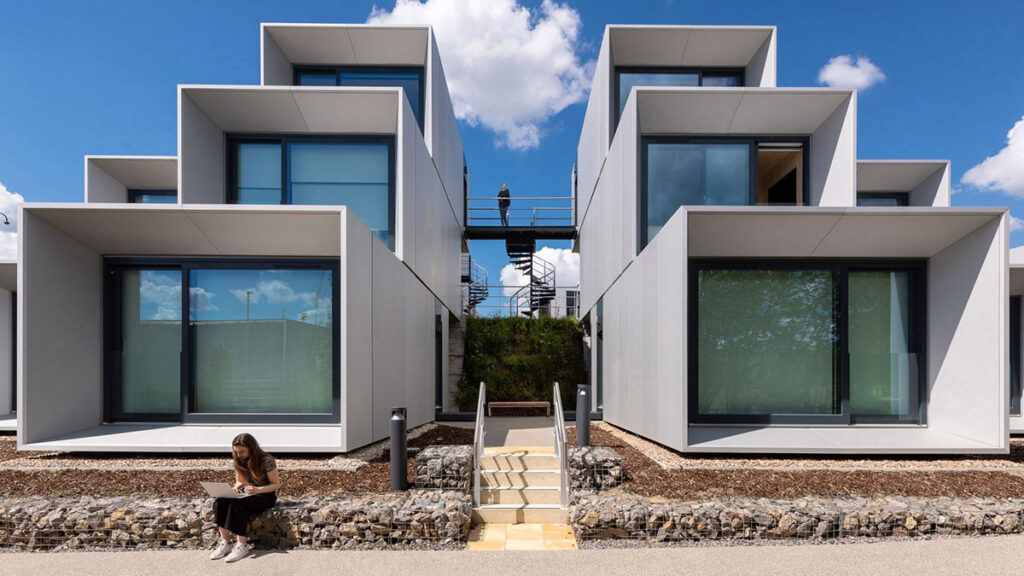
Cultural perceptions of modular homes: Exploring Global Insights
In recent years, modular homes have been gaining traction worldwide as a sustainable and efficient housing solution. However, the cultural perceptions of modular homes vary significantly across different regions and societies. Understanding these perceptions can shed light on both the opportunities and challenges faced by this innovative housing approach.

Introduction to Modular Homes
Modular homes are prefabricated structures built in sections or modules in a factory setting. These modules are then transported to the building site and assembled into a complete home. This method offers numerous advantages, such as reduced construction time, cost-effectiveness, and environmental benefits. Despite these advantages, the acceptance of modular homes is heavily influenced by cultural attitudes and beliefs.
Historical Context and Evolution
The concept of prefabricated housing dates back centuries, but it wasn’t until the post-World War II era that modular homes began to gain popularity. Initially, these homes were seen as temporary or low-quality. Over time, advancements in technology and design have significantly improved their quality and appeal. Today, modular homes are considered a viable option for permanent housing, yet cultural perceptions remain divided.
Cultural Influences on Acceptance
Cultural attitudes play a crucial role in the acceptance of modular homes. In countries like Japan, where space is limited and efficiency is valued, modular homes are embraced for their practicality and innovative design. Conversely, in regions where traditional construction methods are deeply ingrained, such as parts of Europe, there may be resistance to adopting prefabricated housing.
Environmental and Economic Factors
As environmental concerns continue to rise, many cultures are reevaluating their housing preferences. Modular homes offer a sustainable alternative due to their efficient use of materials and reduced waste. Economically, these homes can be more affordable, making them attractive in areas with housing shortages or high costs of living.
Perceptions in North America
In North America, the perception of modular homes has evolved significantly. Once dismissed as cheap or inferior, they are now recognized for their quality and design flexibility. The growing interest in sustainable living has further boosted their popularity. The future of modular housing in North America looks promising as more people appreciate their benefits.
Perceptions in Europe
In Europe, cultural perceptions of modular homes are mixed. While countries like Sweden and Germany have embraced them due to their eco-friendly nature, others remain hesitant. The historical significance of traditional architecture in Europe plays a role in this divide. However, the trend towards sustainable housing is slowly changing these perceptions.
Perceptions in Asia
Asian countries, particularly Japan and China, have been at the forefront of adopting modular homes. The rapid urbanization and need for efficient housing solutions have driven their popularity. The cultural emphasis on innovation and technology aligns well with the concept of modular construction.
Challenges and Opportunities
Despite the advantages of modular homes, several challenges remain. Cultural resistance, regulatory hurdles, and misconceptions about quality are common obstacles. However, these challenges present opportunities for education and innovation. By addressing cultural perceptions and highlighting the benefits of modular construction, the industry can expand its reach.
Innovative Design and Customization
One way to change cultural perceptions is through innovative design and customization options. Modern modular homes offer a wide range of styles and features, allowing homeowners to personalize their living spaces. This adaptability can help overcome preconceived notions about uniformity and lack of character.
Technological Advancements
Advancements in technology are transforming the modular housing industry. From smart home features to energy-efficient designs, technology plays a crucial role in enhancing the appeal of modular homes. For more insights on technology’s role, visit technology and modular design.
Future Outlook
The future of modular homes is promising, with increasing acceptance and demand worldwide. As cultural perceptions evolve and environmental concerns grow, modular housing is positioned to become a mainstream solution. Stakeholders in the industry must continue to address cultural barriers and promote the benefits of modular construction.
Conclusion
The cultural perceptions of modular homes are diverse and complex, influenced by historical, environmental, and economic factors. While challenges remain, the opportunities for growth and innovation are immense. By understanding and addressing cultural attitudes, the modular home industry can play a pivotal role in shaping the future of housing.

FAQs
Are modular homes environmentally friendly?
Yes, modular homes are designed to be environmentally friendly. They use fewer materials, generate less waste, and often include energy-efficient features.
How do modular homes compare to traditional homes?
Modular homes offer similar quality and durability to traditional homes. They are built to the same building codes and standards, with the added benefits of faster construction and cost savings.
Can modular homes be customized?
Absolutely! Modern modular homes offer a range of customization options, allowing homeowners to design a space that suits their preferences and lifestyle.
This article contains affiliate links. We may earn a commission at no extra cost to you.